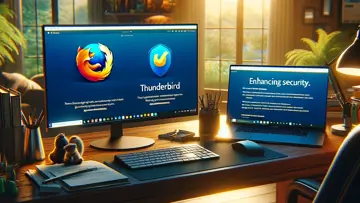Microsoft .NET Framework 2.0: An In-Depth Review of Its Features and Performance
Microsoft .NET Framework 2.0 is a comprehensive software development platform that serves as a core component for building, deploying, and running applications on Windows. As an incremental update over its predecessor, .NET Framework 1.1, version 2.0 introduces numerous enhancements aimed at improving developer productivity, application performance, and the overall security landscape.
The framework provides a robust environment for developing Windows-based applications and web services using languages like C#, VB.NET, and F#. Key features include the introduction of the Common Language Runtime (CLR) version 2.0, improved garbage collection, and support for multiple programming languages under the Common Language Infrastructure (CLI) standards.
Core Features and Improvements
- Enhanced Language Support: The release expands language interoperability, enabling developers to create applications that are easier to maintain and extend through improved compiler features.
- Base Class Library (BCL): The framework enhances its extensive library with new classes, methods, and interfaces that simplify common programming tasks such as file I/O, string management, data access, and XML processing.
- Windows Forms: Offers advanced tools for developing user interfaces with improved rendering performance and support for custom controls.
- ASP.NET: Significant updates to the ASP.NET engine facilitate more productive web development with features like Master Pages, themes, skins, and enhanced data controls.
- Foundation for Web Services: The introduction of the System.ServiceModel namespace and Windows Communication Foundation (WCF) support allows developers to build secure, reliable web services that can communicate over various protocols.
- Configuration Management: Simplified mechanisms for managing application settings enhance deployment flexibility.
Performance and Security Enhancements
The .NET Framework 2.0 improves application performance through optimized Just-In-Time (JIT) compilation and enhanced memory management. The framework's security model is fortified with updated Code Access Security (CAS) policies and stronger cryptography support, providing developers with better tools to secure their applications against threats.
Compatibility and Deployment
The compatibility of applications developed using .NET Framework 2.0 is broadly maintained with earlier versions, easing integration into existing systems. Deployment can be streamlined through setup projects that utilize ClickOnce technology or MSI installers, simplifying updates and user installations.
Development Tools Integration
.NET Framework 2.0 seamlessly integrates with Microsoft's development environments such as Visual Studio 2005, delivering powerful debugging, profiling, and code analysis tools. This tight integration accelerates the development lifecycle and enhances code quality.
Community Support and Resources
The release benefits from extensive community resources including official documentation, tutorials, forums, and third-party libraries. Microsoft’s support channels offer ongoing assistance for troubleshooting issues or implementing complex functionalities.
System Requirements
Running .NET Framework 2.0 requires a Windows operating system compatible with Windows XP SP2, Windows Server 2003 SP1 or later versions. Adequate hardware specifications include a minimum of 128 MB RAM (256 MB recommended) and sufficient disk space for the installation package plus runtime components.
Conclusion
The Microsoft .NET Framework 2.0 marks a significant milestone in Microsoft's developer platform history by offering versatile features that foster application robustness and security. Its extensive library support combined with improved developer tools establishes it as a vital component for enterprise-level software development on Windows environments.
Resumen
_Microsoft .NET Framework 2 es un software de Comercial en la categoría de Desarrollo desarrollado por ® 2006 Microsoft Corporation.
Los usuarios de nuestra aplicación cliente UpdateStar han comprobado _Microsoft .NET Framework 2 en busca de actualizaciones 63 veces durante el último mes.
La última versión de _Microsoft .NET Framework 2 es actualmente desconocida. Inicialmente fue agregado a nuestra base de datos en 15/09/2008.
_Microsoft .NET Framework 2 se ejecuta en los siguientes sistemas operativos: Windows.
_Microsoft .NET Framework 2 no ha sido calificada por nuestros usuarios aún.
Instalaciones
Últimas reseñas
|
|
Ashampoo Background Remover
Ashampoo Background Remover: Schnell und Effizient für Objektextraktion |
|
|
Ashampoo Burning Studio
Software de grabación de CD y DVD fácil de usar |
|
|
IPTInstaller
IPTInstaller by HTC: Solución eficiente de instalación de software para dispositivos HTC. |
|
AnyMP4 DVD Converter for Mac
Conversión de DVD fluida y eficiente con AnyMP4 DVD Converter para Mac |
|
|
SQLRD SSRS Data Driven Automation
Generación de informes sin esfuerzo con la automatización basada en datos SQLRD SSRS |
|
|
|
SupportApp
Atención al cliente eficiente y confiable con SupportApp de WDR Köln |
|
|
UpdateStar Premium Edition
¡Mantener su software actualizado nunca ha sido tan fácil con UpdateStar Premium Edition! |
|
|
Microsoft Edge
Un nuevo estándar en la navegación web |
|
|
Google Chrome
Navegador web rápido y versátil |
|
|
Microsoft Visual C++ 2015 Redistributable Package
¡Aumente el rendimiento de su sistema con el paquete redistribuible de Microsoft Visual C++ 2015! |
|
|
Microsoft Visual C++ 2010 Redistributable
Componente esencial para ejecutar aplicaciones de Visual C++ |
|
|
Microsoft OneDrive
Optimice la administración de archivos con Microsoft OneDrive |





